October 2014 means eclipse season 2 of 2 for the year is upon us.
Don’t fear the ‘Blood Moon’ that’s currently infecting the web, but if you find yourself on the correct moonward facing hemisphere of the planet, do get out and observe the total lunar eclipse coming right up on the morning of Wednesday, October 8th. This is the second and final total lunar eclipse of 2014, and the second of four in a quartet series of lunar eclipses known as a tetrad.
And the good news is, the eclipse once again favors nearly all of North America. From the western U.S. and Canada, the Moon will be high in the western skies when partial phases begin early in the morning on October 8th. The western U.S., Canada and Alaska will see the entire 61 minute span of totality, just 18 minutes shorter than last April’s lunar eclipse. The Moon will be high in the sky during totality for the Hawaiian Islands, and viewers in Australia and the Pacific Far East will witness the eclipse in the evening hours.
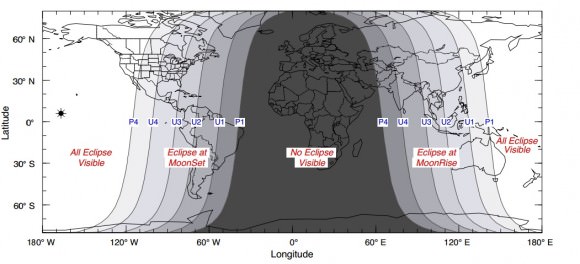
This lunar eclipse is part of saros 127, and marks number 42 of a series of 72 for that particular saros. If you witnessed the total lunar eclipse visible from North America and Europe on September 27th, 1996, you caught the last of the series, and if you catch the next eclipse in the saros on October 18th, 2032, you’ve earned a veteran lunar eclipse-watchers badge of seeing an exeligmos, or “triple saros” of eclipses.
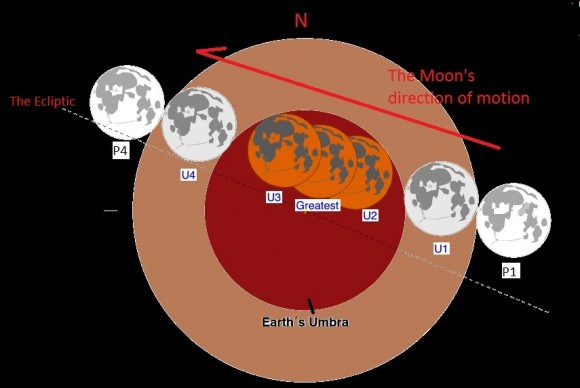
Timings for key phases of the eclipse are as follows:
P1- Penumbral phase begins: 8:14 UT/4:14 EDT/1:14 PDT
U1- Umbral (partial) phase begins: 9:15 UT/5:14 EDT/2:14 PDT
U2- Totality begins: 10:24 UT/6:24 EDT/3:24 PDT
Mid-totality- 10:55 UT/6:55 EDT/3:55 PDT
U3- Totality ends: 11:25 UT/7:25 EDT/4:25 PDT
U4- Umbral phase ends: 12:35 UT/5:35 PDT
P4- Penumbral phase ends: 13:35/6:35 PDT
Not all total lunar eclipses are the same when it comes to color. Totality can appear anywhere from a dark brick color, as happened during the December 9th, 1992, eclipse following the eruption of Mount Pinatubo, when the Moon nearly disappeared during totality, to a bright coppery red, as seen during the April eclipse earlier this year. The Moon passes to the north of the dark central core of the Earth’ shadow next Wednesday, so expect a brighter than normal eclipse, especially along the Moon’s northeast limb. Grab a painter’s wheel and compare the eclipsed Moon to swatches of orange through red: what colors do you see? What you’re seeing is the combinations of all the world’s sunsets refracted into the cone of the Earth’s shadow, which is about three times the size of the Moon at its average distance as seen from Earth. Remember, the Moon is experiencing a total solar eclipse as we watch the lunar eclipse unfold!

This color can be quantified and described on what is known as the Danjon Scale, with 0 being a very dark eclipse with the Moon barely visible, to a 4, meaning a very bright eclipse.
And yes, each total lunar eclipse is now receiving the “Blood Moon” meme thanks to ye ole Internet. Expect the conspiracy-minded to note that this eclipse occurs on the Jewish holiday of Sukkot starting at sundown on the 8th, which isn’t really all that wondrous as the Jewish calendar is a luni-solar one, and total lunar eclipses have to occur during a Full Moon by definition. Wait long enough, and an occasional “Sukkot total lunar eclipse” does indeed occur.
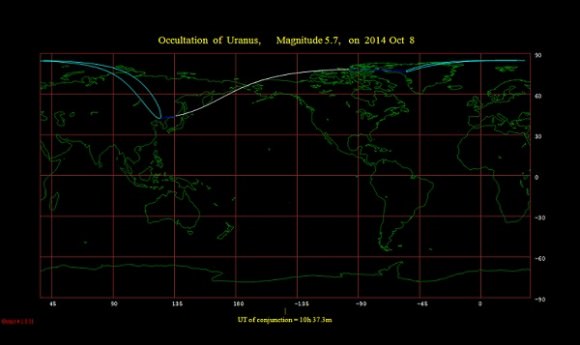
But a truly rare event does occur during this eclipse, as the Moon actually occults (passes in front of) the planet Uranus during totality for observers in northern Alaska and northeast Asia. The rest of us in the observing zone will see a near miss. Can you spy Uranus with binoculars near the lunar limb during totality? Another such rarity occurred during Shakespeare’s time on December 30th, 1591, involving Saturn and the eclipsed Moon, and another such odd occurrence transpires in 2344 A.D.
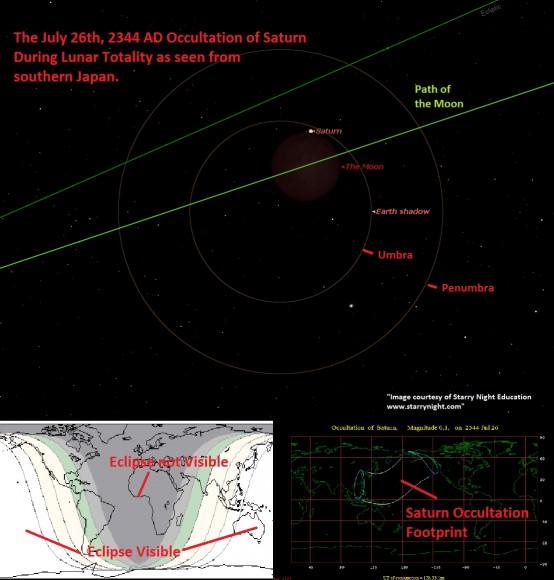
The brightest star to be occulted by the total eclipsed Moon as it crosses the constellation Pisces is +7.9th magnitude HIP 4231 for the northern U.S. and Canada.
And speaking of historical eclipses, there’s a Columbus Day tie-in with the phenomenon as well. Like many mariners of his day, Columbus was well-versed in celestial navigation, and used a total lunar eclipse to get a good one-time fix on his longitude at sea, an experiment that you can easily replicate. Columbus also wasn’t above using prior knowledge of an impending lunar eclipse to get himself and his crew out of a bind with the locals when the need arose.

Photographing an eclipse with a DSLR is as easy as shooting an image of the Moon. Try this a few evenings before the big event. A minimum focal length of 200mm is needed to render the Moon larger than a white dot in the image, and remember that the Moon is much darker during total eclipse, and you’ll need to step the exposure times rapidly down from 1/100th of a second to 2 to 4 seconds during totality.
A long-running effort by Sky & Telescope has been looking for amateur observations of precise crater contacts along the rim of the umbra in an effort to measure variations in the diameter of the Earth’s shadow.
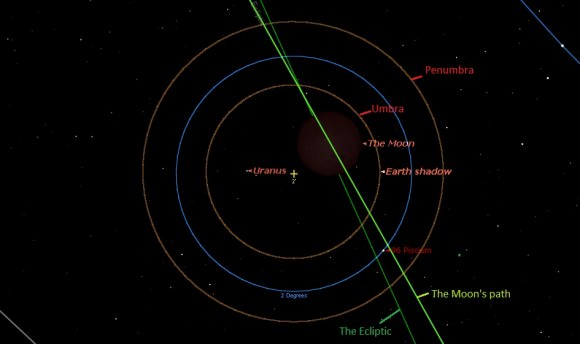
As always, weather prospects are the big question mark when it comes to eclipses. Typically, the southwestern U.S. experiences 13-20 clear days in the month of October; prospects worsen to the northwest, with an average of 3-12 days. We’ll be looking at resources such as NOAA, Skippy Sky and ClearSkyChart on the evenings leading up to the 8th. The great thing about a lunar eclipse is, you don’t need a 100% clear sky to see it: just a clear view of the Moon!
Up for a challenge? We’ve yet to see a capture of a shadow transit of the International Space Station in front of the eclipsed Moon. This time around, such a capture should be possible across southern coastal California and the Baja peninsula just minutes prior to the onset of totality.
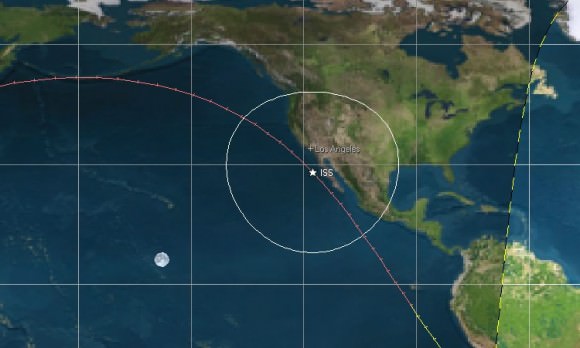
Another bizarre catch, known as a selenelion — witnessing the end of lunar totality after sunrise — may just be possible across the northeastern U.S. into the Canadian Maritimes as the eclipsed Moon sets during totality. The more elevation you can get the better! This works because the Moon lingers a bit in the large shadow of the Earth, plus atmospheric refraction gives the low altitude Sun and Moon a slight boost.
Clouded out? On the wrong side of the planet? You can watch the eclipse online at the following links:
– Live views courtesy of Gialuca Masi and the Virtual Telescope starting at 10:00 UT on October 8th.
– A live webcast starting at 9:00 UT courtesy of Slooh:
– A Columbia State University broadcast, (time to be determined).
Planning an ad-hoc broadcast? Let us know!
And as the eclipse wraps up, the biggest question is always: When’s the next one? Well, lunar eclipse number three of the four eclipse tetrad occurs next year on April 4th, 2015… but in just two weeks time, the western United States and Canada will also witness a fine partial solar eclipse on Oct 23rd…
Stay tuned!
Got images of the total lunar eclipse? Send ‘em in to Universe Today’s Flickr forum!
Interested in eclipse sci-fi? Check out our latest short stories Exeligmos and Shadowfall.

